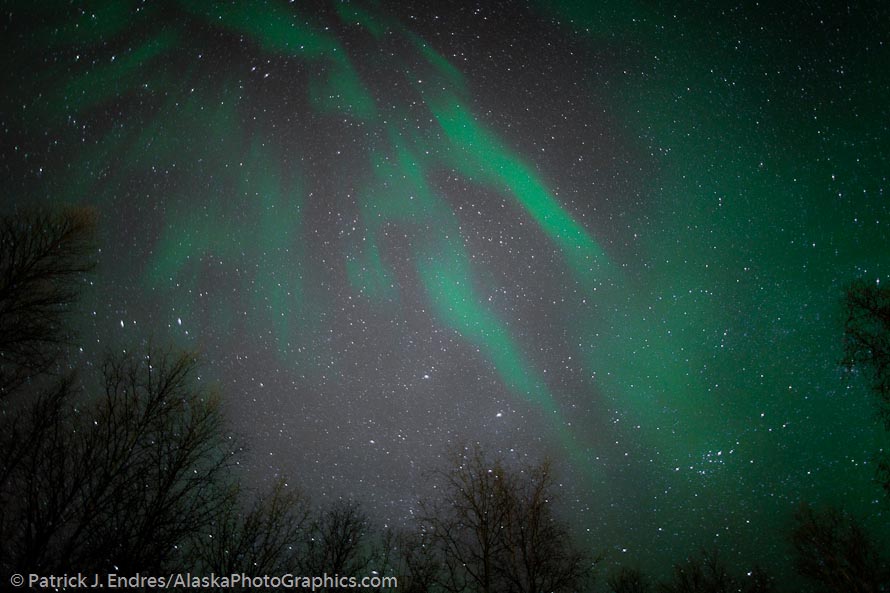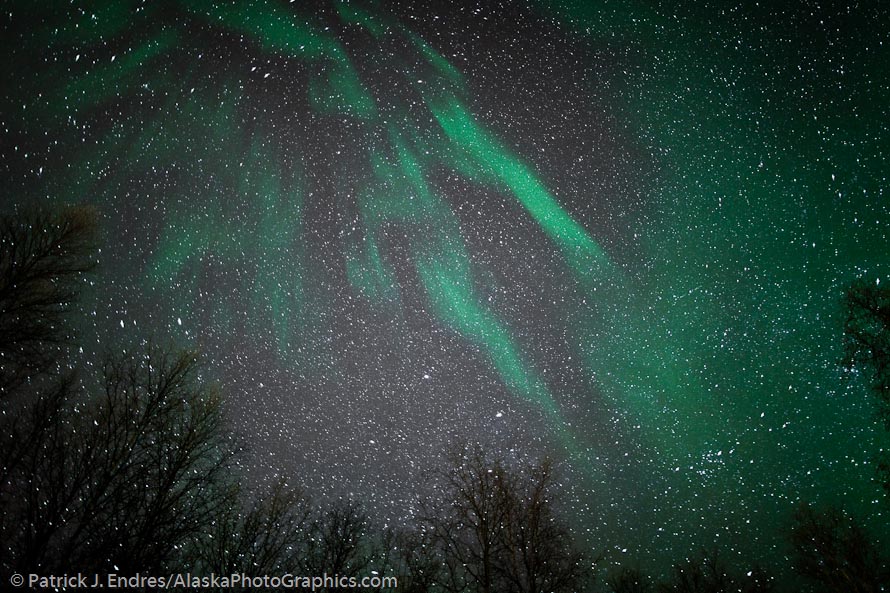I was all ready to photograph the Gemenid meteor shower last night, but clouds moved in around midnight, which was a disappointment. However, on Sunday morning, I woke up to a faint aurora display, directly over my house. I grabbed my camera and took a few experimental shots. I say experimental because I was testing out using Live View to achieve critical focus on Canon’s 24mm 1.4L II. This lens has been very difficult to lock into focus when shooting the aurora. The regular method of pre-focusing the lens before dark, which has worked flawlessly on all my other lenses, has constantly failed with the 24mm 1.4. I’ve used Live View as an alternative to pre-focusing, but felt I needed some additional magnification to confirm sharpness on an object as small as a star Even when zoomed in to 10x on the LCD, as star is very small indeed. This is particularly true with fading eyesight acuity!
So I used an LCD loupe with a built in focus diopter. It works sufficiently to view focus sharpness, although, it is a little awkward to handle. I know that all things get much more complicated when the temps are very cold. But focus really only needs to be achieved once per evening (generally), so it is not an item that needs to be used often in this case. I could have used a smaller loupe, and might explore this further, but I wanted this Hoodman Loupe since it serves the dual purpose for use with video. And that I’m yet to experiment with.
The aurora intensity was pretty low, so my ISO was high and the exposure at 30 seconds. Additionally, with such a long exposure and dim aurora, I picked up a little light pollution from the nearby town lights. When working with these images in Lightroom, I was surprised at the effect of the clarity slider on the stars.
I’ll address some technical and optical issues of the 24mm 1.4L II in the next post, as I know that many of you have asked about that. One thing is for sure about that lens, it really shows the stars.

Clarity slider set to zero in Lightroom. Aurora borealis, Fairbanks, Alaska. Canon 5D Mark II, 24 mm f/1.4L, ISO 1600
Clarity at Zero

Clarity slider set to 100 in Lightroom. Aurora borealis, Fairbanks, Alaska. Canon 5D Mark II, 24 mm f/1.4L, ISO 1600
Clarity at 100






